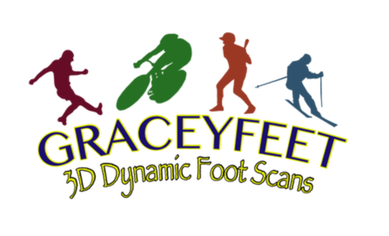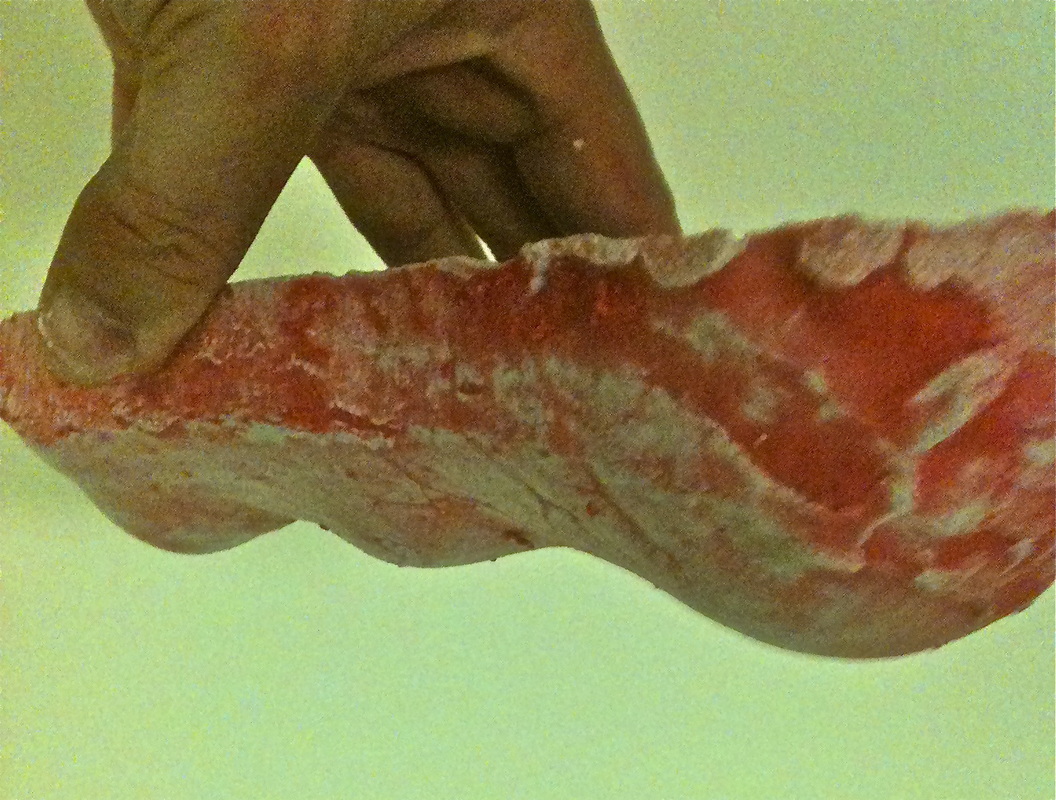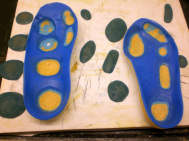|
There is no doubt that a bad case of Shin Splints can be incredibly difficult to rehab from. Shin splints are a painful condition in the lower leg involving inflammation that occurs in the anteromedial compartment (the inside, front of your shins). Shin splints are considered an over-use syndrome and can result from intense ballistic activity such as boxing, running, or plyometric exercises such as platform jumping. The symptoms for shin splints include painful tightness and/or tenderness around the tibia, especially after running or walking for long distances over hard surfaces. Shin splints are generally caused by excessive strain and stress of muscles and tendons along the shin bones (tibia and fibula) and subsequent fluid retention in the interstitial spaces of the anterior leg. There are no contractile fibers over the bone in this area to assist in pumping fluid away, only a broad fascia of connective tissue. When micro-swelling persists in this area, it causes pressure over the bone and a painful ache. Overuse of the surrounding muscles and high ground reaction forces are the most common mechanisms of injury.
Excessive motion of the subtalar joint of the feet serves to increase vertical pressures through the lower legs. Over-pronation leads to internal tibial rotation and increases the tractional forces upon the muscles and ligaments while excessive supination reduces the contact surface area of the foot and drives increased pressures up the limbs.. Rest, Ice, Elevation, Compression, and positive-flow massage are required to help alleviate shin pain; running and other strenuous activities should be avoided until the condition is minimized. Shin Splints can frequently be prevented by warming up with an appropriate stretch routine before participating in intense physical activity. Footwear with hind-foot support and midfoot control in combination with a pressure-reducing insole is a good way to prevent and reduce the effect of shin splints, especially for boxers, football players, runners, or anyone who strikes heavily with the heels or are constantly on their toes. Orthotic insoles are useful in that they help control the foot and reduce excessive plantar pressures and unwanted vibrations. Stability in the frontal plane combined with heel cushioning has been shown to reduce impact ground reaction forces (GRF) while repositioning the force vectors and reducing their magnitude. These changes result in more comfortable weight-bearing during high impact, or long duration activity.
2 Comments
A blurry-eyed arrival to the conference from weeks of inspired creativity in the "Rehabilitation Arts" was met with friendly faces, kind hand-shakes and hugs. I had a wonderful time meeting and re-meeting everyone and I am told my talk went over quite well. It was titled "Pedorthic Solutions for Persons With Proteus: Phun With Pheet!" and I demonstrated the fabrication techniques I employ to make Brian Richards' custom orthotics. I took out the algebraic math and used some simple geometry to demonstrate the concept of fore-foot varus or valgus wedging for dispersing plantar pressures while simultaneously relieving large bony masses at each stage of the gait cycle. I had limited evaluation findings except for my powers of recall (I've seen this population since 1999), photos, conversations with Brian and the casts of his feet. A great many assumptions were made regarding joint position from the STJ and above but nothing beats good communication to gain a thorough understanding of a person's pathology. I employed a tissue stress approach to identify key areas of need and selected the materials that could do the job. I issued Brian his new orthotics in front of the audience and other than two small areas of fit and feel, Brian said,"It feels like I'm walking on air!" A priceless moment.
My friend Daniel was awesome in delivering a method of adjusting Crocs with a heatgun. I and the audience were raptured by his passion and creative enthusiasm. I also introduced my "Conceptual Pedorthics" approach whose philosophy states that assisting the human body in self-locomotion will improve life experience and strives to view the foot as an existential tool. This school of thought allows for open-minded, evidence-based, pedorthic foot care within the confines of the patient's functional life. Thank you, Dr. Leslie Biesecker, Kim Hoag, Julie Sapp, Barbara King, Mary Timmerman, Pam Goddard and all the great people involved in the Proteus Syndrome Foundation in one way or another. Thank you to Uneaqual Technologies, Fastcut CNC, Pel Supply, and the good folks at Podiatry-arena.com . Best of all, A cause has been found. And that was the best news all day long! http://www.proteus-syndrome.org/proteus-syndrome/medical-research/ |
Chris Gracey MPT, Cped
Archives
October 2015
Categories
All
|
Follow Graceyfeet on Facebook and Twitter



 RSS Feed
RSS Feed
